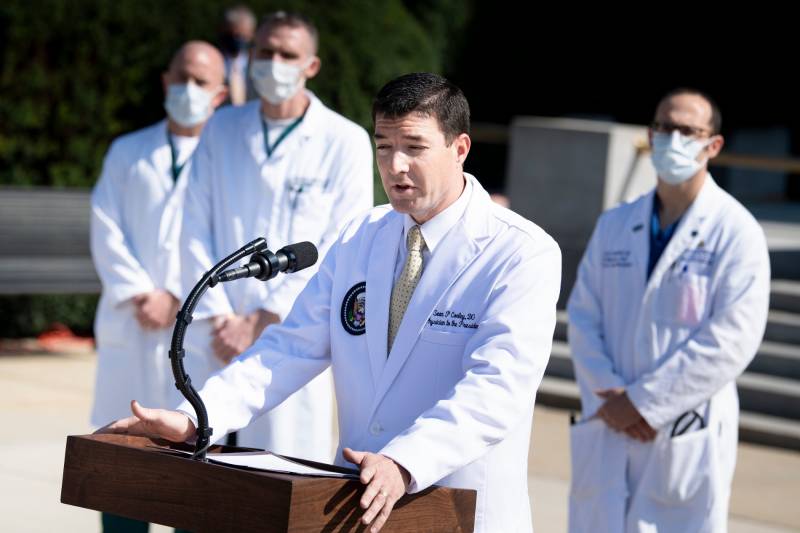President Trump has experienced two drops in his oxygen levels over the course of his COVID-19 diagnosis and is now also being treated with a steroid, but could be discharged from Walter Reed National Military Medical Center as early as Monday, his physicians told reporters during a briefing Sunday.
Trump was admitted to Walter Reed on Friday evening after announcing early on Friday morning that he and the first lady had tested positive for the coronavirus.
"Since we spoke last [on Saturday], the president has continued to improve," the president's physician, Sean Conley, said. "As with any illness, there are frequent ups and downs, particularly when a patient is being so closely watched 24 hours a day."
Conley said that Trump had a high fever and saw his oxygen levels fall while at the White House on Friday morning ahead of being moved to Walter Reed. He did not detail Trump's high temperature.
"Given these two developments, I was concerned for possible progression of the illness," Conley said. "I recommended [to] the president we try some supplemental oxygen, see how he'd respond. He was fairly adamant that he didn't need it. He was not short of breath; he was tired, had the fever, and that was about it. After about a minute on only 2 liters, his saturation levels were back over 95%. He stayed on that for about an hour."
